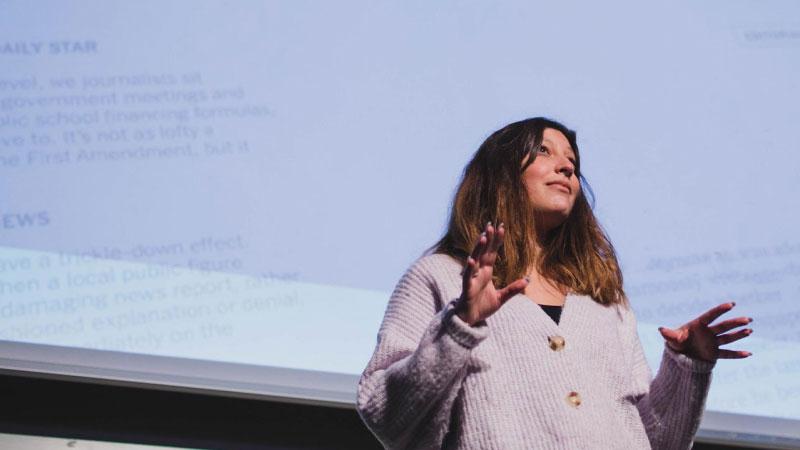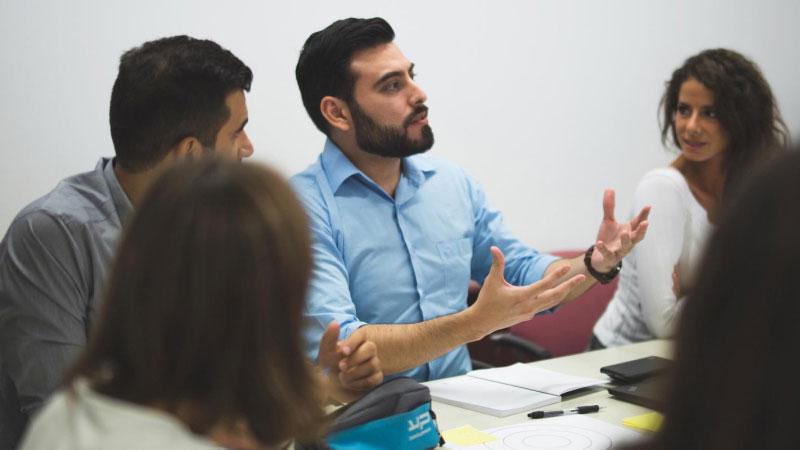The UPF-BSM wants to take a further step towards the use of innovative techniques that maintain teaching excellence with this Case Center.
The UPF Barcelona School of Management and Pompeu Fabra University have always opted for the foremost techniques when it comes to transmitting knowledge to students, in order to give them a strong grounding in the basics and prepare them so that they can successfully develop in their professional field.
We have also shown a clear desire to strengthen the ties between university and business, whether by incorporating professionals from the business world into the team of professors, or by using real cases to explain theoretical content.
This section provides students, professors, and professionals with a selection of case studies, which better describe the real circumstances of companies, and guidelines for preparing case studies for those who wish to contribute.
Case Repository
Case studies are classified into the following thematic areas:

Accounting and finance
Here are a selection of company case studies in this sector, such as Netflix or eCooltra

Strategy and Entrepreneurship
Here are a selection of company case studies in this sector, such as Amazon or Logifruit

Marketing and Communication
Here are a selection of company case studies in this sector, such as SEAT or Mercabarna

Operations and Technology
Here are a selection of company case studies in this sector, such as Bureau Veritas or TMB

People and Organizations
Here are a selection of company case studies in this sector, such as UPF-BSM

Innovation
Here are a selection of company case studies in this sector, such as Haier
Subscribe a case
For the acceptance of cases it is essential to follow the following rules of preparation:
- The title of the case should appear on the first page and, at the bottom of the page, this annotation: "Case written by name and affiliation of the author(s). Year of writing".
- All published cases will bear the logo of the UPF Barcelona School of Management, together with that of the institution from which the author(s) originate(s).
- The font of the text should be Times New Roman, size 12 and 1.5 point line spacing; paragraphs should begin without indentation, and all headings should be aligned to the left.
- Cases may be written in Catalan, Spanish or English.
- Tables, graphs or figures should be called figures and should be original (if they are not, the source should be indicated). In addition, they should have an order number (for example: figure 1, figure 2...) and a title, which should be noted at the foot of the figure. Due to problems of composition, authors should not assume that the figures will be located in the same place where they appear in the original, so expressions such as "in the following figure..." or "the figure on page 11..." should be avoided. In terms of wording, a reference such as "figure 2 shows..." should be used.
- Bibliographic citations should appear in parentheses and contain indications of the author(s), the year of publication and the page(s) referred to; for example: (Blake, 1992: 72-83), Blake (1992: 22) or (Blake et al., 1992: 72-83). Words or phrases written by the author in another language should be in italics. Bibliographical references should be added at the end of the paper under the title "Bibliographical references" and should be arranged alphabetically by authors and according to the following criteria for standards, articles, conference papers and books:
- BENJAMIN, J.J. i BRENNER, V.C. (1974) "Perceptions of Journal Quality" The Accounting Review, April, 99.360-362
- PINA, V., i TORRES, L. (1999) "Análisis de la Información Externa, Financiera y de Gestión de las Administraciones Públicas", Instituto de Contabilidad y Auditoría de Cuentas, Madrid.
- Citations of the same author and year will be differentiated by a letter after the corresponding date (for example: 2000a, 2000b...). For the assignment of the letters, a temporal order will be used and, if it is not known, an alphabetical order of the cited works will be used.
- The text of each paper will be structured in sections, subsections and other minor divisions. These divisions should be presented as follows:
- 1.MAIN SECTIONS IN BOLD CAPITAL LETTERS (SIZE 14)
- 1.2. SECONDARY SECTIONS IN CAPITAL LETTERS AND ITALICS (BODY 14)
- 1.2.1. main subsections in italic type (body 12)
- 1.2.1.1. Secondary sub-headings in round type (size 12)
- The case may follow the structure proposed below:
- Introduction and brief history of the company.
- General description of the sector, competition, opportunities and threats.
- Description of the company's current situation and key aspects to be analyzed.
- Questions to be answered.
- Annexes.
- Bibliographical references.
Cases, together with the corresponding technical note, should be sent to centraldecasos@bsm.upf.edu.
The technical note, in addition to the style and format determined in the instructions for the preparation of the case, must include the following sections:
- Synopsis of the case.
- Target audience: indicate the recipients of the case developed, whether they are undergraduate or graduate students, or industry professionals, etc.
- Learning objectives and key issues.
- Teaching method: describe how the case can be used in class. For example: ask open questions to generate discussion, offer ideas for group work, suggest how learning can be consolidated at the end of the session, and so on.
- Discussion questions: ask questions to promote discussion of the case in class.
- Answering the questions raised by the case.
- Background to the case: provide references to supplementary material relevant to the case or other related materials. You can also provide information about "what happens next", which is often of great interest to students.
- Multimedia: include links to video clips and audio files relevant to the case.
The case method was originated at Harvard Law School in 1870, when Christopher Langdell introduced it as a strategy for the training of professionals.
It is an active teaching technique that focuses on the investigation by students of a real and specific problem that helps them to acquire the basis for an inductive study (Boehrer and Linsky, 1990); that is, it is a learning method based on active and cooperative participation and on the democratic dialogue of students on a real situation (Asopa and Beye, 2001).
In the specific case of the field of business management, the case method represents a specific situation in a company, with real data to be interpreted in order to be able to prepare an analysis of the company's current situation that affects decision-making. Once the case has been presented and the company's current situation has been described, a series of questions are proposed to focus on one of the proposed solutions that will help the management team to make decisions.
In this way, by analyzing the problem or situation posed, students can put into practice the knowledge they have acquired and make a set of decisions that would affect the operation of the company.
Bibliography
Boehrer, J. y Linsky, M. (1990). Teaching with cases: Learning to question, New directions for teaching $ learning, Vol. 42, pág. 1-130. https://doi.org/10.1002/tl.37219904206
Asopa, B i Beye, G. (2001). Appendix 2: The case method. http://www.fao.org/docrep/W7500E/w7500e0b.htm
The main objective of the case method is for students to work on the basis of a real situation and to reflect on this situation and then pool the different ideas. Thus, it is a methodology that involves a higher degree of involvement on the part of the students and also on the part of the teachers.
At first, the teacher presents the case and launches a series of questions to make the students reflect. Subsequently, the students, in a reasonable amount of time, must read the case in depth and propose solutions to the challenges posed to improve the company's situation.
Once the case has been presented, and after the students have done their work, the most important part of this methodology will take place: the sharing of ideas and the discussion of alternatives to provide the company's managers with actions that will improve its future. In this phase, the teacher will only act as moderator and will emphasize those important aspects that should be highlighted or questioned in order to generate debate.
It is important to emphasize that in the case methodology there is no right and wrong answer, but the most important thing is the argumentation of the proposals for decision making within the company.
Awards for the best business cases
The Faculty of Business and Economic Sciences, the UPF Barcelona School of Management, the Department of Economics and Business and ACCID want to promote the creation of business cases that can be disseminated and used later for teaching.
To this end, a competition for the best case studies in accounting, finance, and management control is being organized annually.
Go to the UPF-BSM awards section, or use the following link to consult the competition rules.

